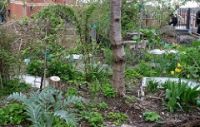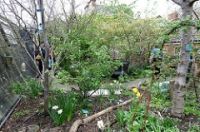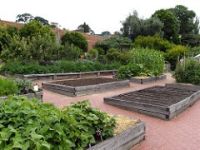Tips For a Roof Garden

 Consult With Building Engineers Before Beginning
Consult With Building Engineers Before Beginning
While most flat roofs in a city will be able to withstand the weight of a roof garden, it is always a good idea to get the roof checked over by a professional structural engineer before committing the extra weight to the structure.
 Consider Access When Designing Your Roof Garden
Consider Access When Designing Your Roof Garden
You may feel you have the perfect roof space for a garden – but will you be able to get all the tools, materials and growing medium up there in the first place? Do not forget to consider what access there is to carry things up there and make sure your plans are feasible from an access point of view.
Create Storage Space For Tools Etc..
When deciding where to place your raised beds, beehives, seating areas and whatever else you have planned for the space, it is also a good idea to consider creating a storage space for tools and other things needed for the garden, so you do not have to lug heavy things up and down to the roof when they are frequently used up there.
 Use Sturdy Containers/ Structures
Use Sturdy Containers/ Structures
Raised beds and other structures should be built for the worst possible conditions, not the best. Your roof may seem a balmy paradise on a sunny, still day but the height of the structure could mean high winds. Build for stormy conditions with sturdy raised beds and containers, as things that could potentially blow off the edge of the roof could cause a disaster.
Consider Water Collection
Another thing to think about when planning the layout and design of your roof garden is water. If possible, collect rainwater that can be stored and used during dry periods to water your garden. Consider a rainwater irrigation system to cut down on the workload during the summer months.
Think also about making the garden sustainable over time by taking measures to maintain and improve the fertility of your growing areas. Think about all of these things from the beginning and you will avoid many of the potential pitfalls of rooftop gardening.